The best way to control your blood sugar levels is by keeping one’s weight under check. Yoga provides a great workout, stimulation of the abdomen, reduction of stress and preventing any further damages associated with the disease. Yoga’s holistic approach works wonders in all of the above.
Regular practice of Suryanamaskar and Kapala Bhati with Nauli Kriya helps in weight management, and regulation of the endocrine, circulatory and nervous systems. Selected asanas and Pranayama techniques like anulom vilom can help calm the mind, increase pituitary and pancreatic interaction and keep glucose levels down.
There are asanas that directly stimulate the pancreas to rejuvenate its insulin producing capacity. The top 5 asanas to focus on are:
1. Mandukasana
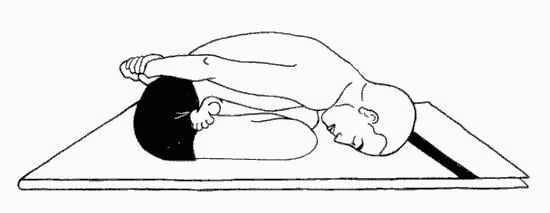
How to do it:
- Sit in vajrasana (on the knees with toes pointed and heels touching the butt)
- Close the fingers of both hands into fists and touch the thumbs
- Place the joint thumbs on the navel and let the fists press into the abdomen
- Inhale and bend forward while exhaling while keeping the neck in line with the back
- Hold the posture and breath for as long as comfortably possible, inhale and sit back in vajrasana
- Repeat another 4 times
Why do it:
- Stimulates the abdominal organs, especially the pancreas to regulate insulin production
- Helps treat constipation and digestive disorders
- Beneficial for the cardiovascular and reproductive functioning
- Helps in flexibility and toning of the legs and abdomen
Contraindications
Avoid if there are severe knee, ankle or back issues, pregnancy, peptic or duodenal ulcers and those who have undergone abdominal surgery.
Preparation/modifications
If sitting in vajrasana is difficult, one can practice in sukhasana or on a chair to gain the benefits of the abdominal pressure. But to gain full benefits one needs to work consistently towards sitting in vajrasana with the help of a rolled blanket at the ankle/knee.
2. Dhanurasana:
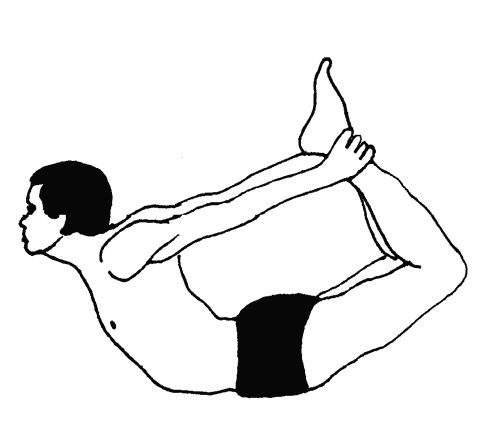
How to do it:
- Lie down on the stomach
- Bend the knees and hold the ankles with each hand
- Inhale and lift the torso up while pulling the legs up and back with the hands such that the only the abdomen stays on the floor.
- Remain in the position for a while by taking gentle breaths
- Release the posture by exhaling and lying flat
- Sit back in balasana or child’s pose to relieve any strain to the back
Why do it:
- Tones the abdomen, improves the functions of the pancreas and liver
- Back muscles are strengthened and helps with spinal flexibility
- Stimulates the reproductive organs, relieves menstrual pain and constipation
Contraindications
Avoid during pregnancy, hypertension, neck injury, recent abdominal surgery, hernia or ulcers
Preparation/modifications
The pose may be difficult for a beginner and one can prepare by practicing bhujangasana, shalabhasana and ardha dhanurasana.
3. Ardha Matsyendrasana:
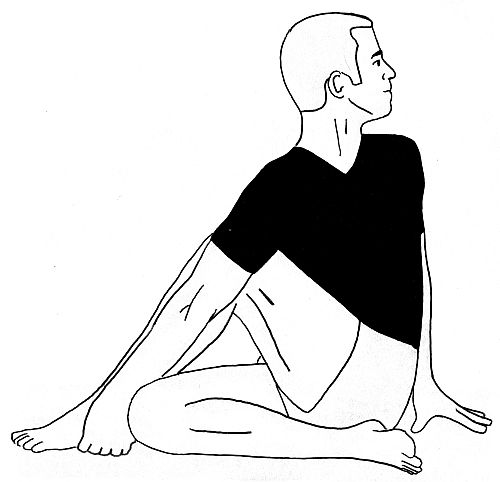
How to do it:
- Sit with the legs stretched out in front, erect spine and sit bones firmly on the floor
- Bend the left leg at the knee on the floor, and place the heel near the perineum or the right hip
- Bend the right leg over the left knee and place the foot on the floor
- Connect the left elbow to the right knee, place the left hand on the outer side of the right leg and hold the right big toe. Stretch the right hand towards the left thigh or place it as far as possible on the floor to the left
- Inhale and straighten spine to grow tall, exhale and twist the abdomen to right and look over the right shoulder. Ensure that the sit bones are both on the floor.
- Hold the asana while maintaining a long spine, and 5-10 gentle breaths
- Release the posture by exhaling while releasing the right hand, waist, neck and chest
- Repeat the same procedure on the opposite side
Why do it:
- Effective for fatigue, backache, shoulder or neck pains
- Helps reduce abdominal fat and for constipation and digestive disorders
- Stimulates the pancreas, kidneys, intestines, liver and detoxifies
- Tones spinal nerves and increases spinal elasticity
Contraindications
Avoid if spinal or back injuries, pregnancy
Preparation/modifications
The lower leg can be kept stretched out straight or cushions can be used for support if the sit bones are not on the floor
4. Halasana:
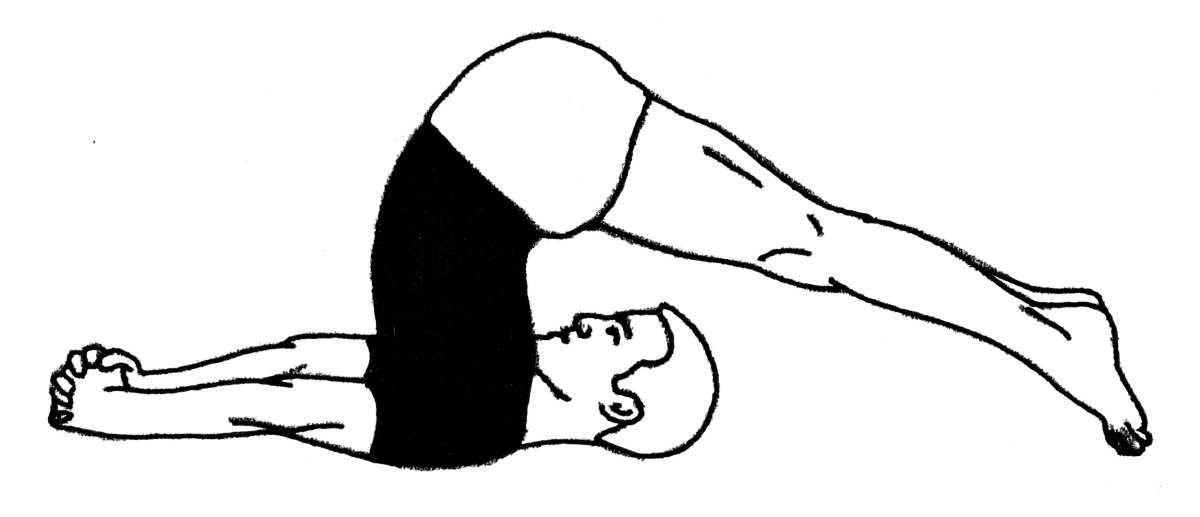
How to do it:
- Lie on the back and bend the legs at the knees, palms on the floor facing down
- Inhale and lift the abdomen and straighten knees and keep lifting the abdomen while supporting the hips with hands, until the back is perpendicular to the floor and resting on shoulders
- Exhale and bend the legs at the hips and touch the floor behind the head with the toes
- Keep the hands on the floor, palm facing down and let the body relax with 5-10 gentle breaths. Strictly avoid turning the head/neck while in this pose
- Release the asana by taking the legs up while inhaling and gently bringing them down to the floor while exhaling and relax
- Do a gentle matsyasana (onto elbows and drop neck down) to release any stress in the neck
Why do it:
- Activates thyroid gland and hence regulates many essential bodily systems
- Stimulates and massages internal abdominal organs such as pancreas, spleen, liver and kidneys
- The inversion helps fresh blood flow and rejuvenates the mind
Contraindications
Avoid for conditions of hypertension, liver/spleen disorders, during menstruation, recent neck injuries, pregnancy.
Preparation/modifications
Viparita karani asana can be practiced before halasana as a preparatory pose if found difficult
5. Jathara Pariwarthanasana:
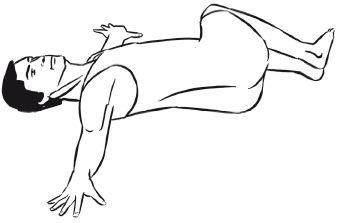 How to do it:
How to do it:
- Lie on the back with arms stretched out at shoulder level like a T.
- Exhale and contract the abdomen pushing the lower back to the floor while lifting the legs to 90 degrees and inhale
- Contract the pelvic floor, squeeze the legs together, press the left shoulder to the floor and lower the legs to the right reaching towards the right hand, while exhaling. Make sure that the shoulders remain on the floor and turn the neck to the left. Keep the feet a little off the floor without allowing the torso to roll. Breathe 3-5 times
- Inhale and smoothly lift the legs back to center and repeat on the left side.
Why do it:
- Strengthens and tones the abdominal muscles and regulates internal organs
- Lengthens and realigns the spine and hydrates spinal disks
- Helps in detoxification, relaxation of mind
Contraindications
To be avoided by those with recent back injuries, degenerative disks, hip/knees problems, pregnancy
Preparation/modifications
The knees can be bent and dropped to the sides if the full leg lift is found too difficult or one has a back pain.
6. Shavasana
Shavasana should always be practiced after these asanas. It reduces anxiety, lowers blood pressure and completely relaxes the body and mind thereby having a profound effect on the endocrine, respiratory and nervous systems.
For more information on our Diabetes packages, visit click here or contact us at cs@ayuruniverse.com
